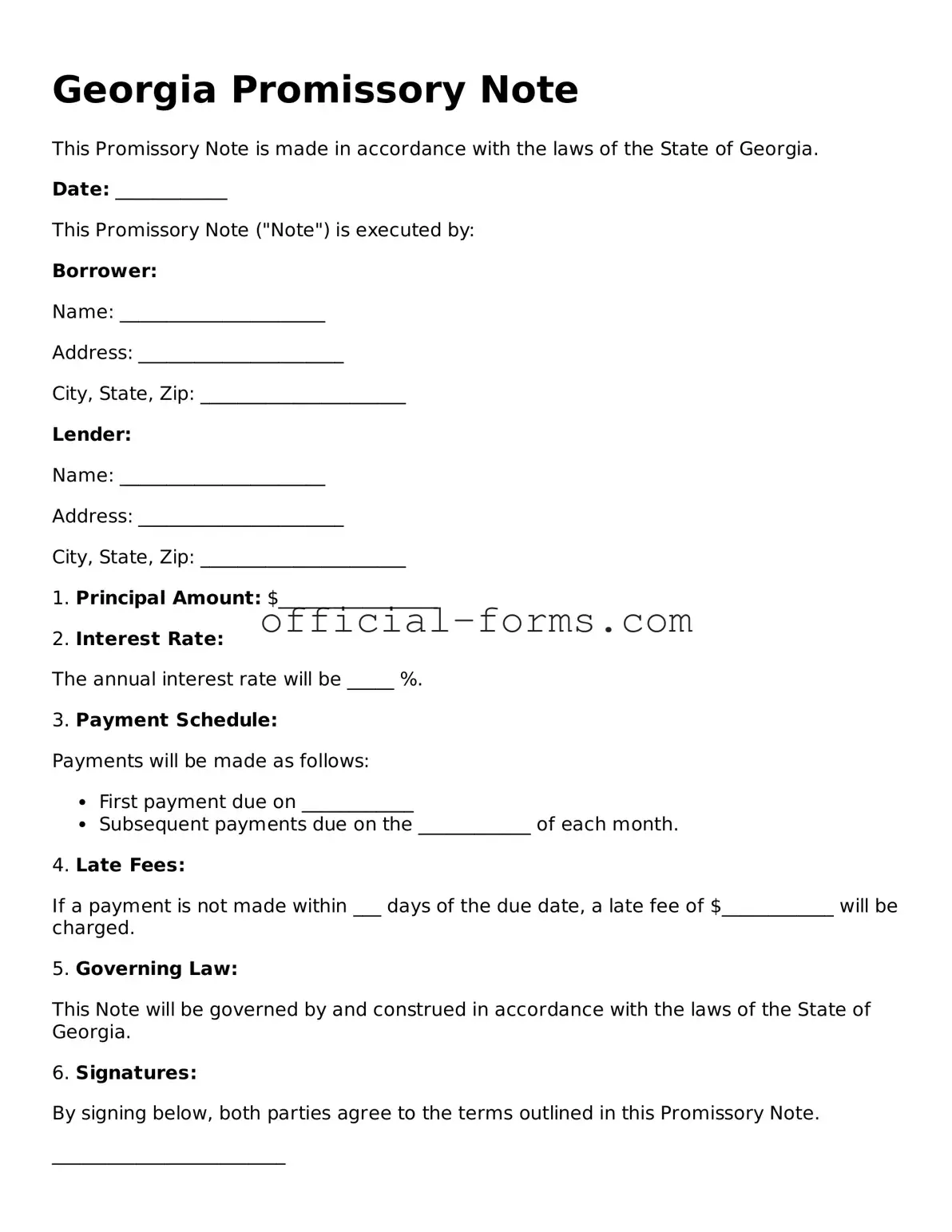Official Georgia Promissory Note Document
A Georgia Promissory Note is a legal document that outlines a borrower's promise to repay a specific amount of money to a lender under agreed-upon terms. This form serves as a written record of the loan, detailing essential information such as the loan amount, interest rate, and repayment schedule. Understanding this document is crucial for both parties involved, as it helps ensure clarity and accountability in the lending process.
Open My Promissory Note Now
